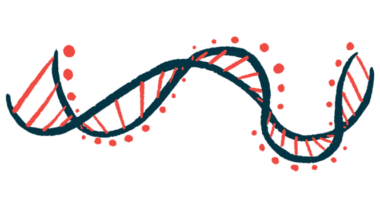Epigenetics may be key to ALS disease progression, study shows
Changes in nerve cells predicted speed of disease worsening

Epigenetic changes — chemical modifications in DNA that alter gene activity — in nerve cells from people with amyotrophic lateral sclerosis (ALS) may be associated with the rate of disease progression, a study suggested.
Changes in certain regions of a patient’s nerve cell genome were able “to predict ALS disease progression rates with similar accuracy to methods based on biomarkers and clinical status,” the researchers wrote.
The study, “Disease related changes in ATAC-seq of iPSC-derived motor neuron lines from ALS patients and controls,” was published in Nature Communications.
In ALS, motor neurons, the specialized nerve cells that control voluntary movements, are gradually lost, leading to progressive muscle weakness and atrophy (shrinkage). The speed of decline, however, varies substantially from patient to patient, with the time from symptom onset until death ranging from a few months to decades.
While as many as 50% of ALS cases can be explained by genetic factors, known genetic mutations account for less than 15% of cases, meaning there are more genetic risk factors that have yet to be discovered.
Different causes, different treatments
“We may get to a point in a decade or so where we don’t even think of ALS as one disease,” lead author Ernest Fraenkel, PhD, a biological engineering professor at the Massachusetts Institute of Technology (MIT), said in a university press release. “If the root causes are different for all these different versions of the disease, the drugs will be very different.”
One challenge in locating these genetic drivers stems from their rarity in patients, requiring a large sample size for them to be detected. Furthermore, ALS risk might be influenced by epigenetic factors, which control whether a gene is turned on or off without changing the DNA sequence.
“Because we expect the disease to be heterogeneous [variable], you need to have large numbers of patients before you can pick up on signals like this,” Fraenkel said. “To really be able to classify the subtypes of disease, we’re going to need to look at a lot of people.”
In collaboration with the Answer ALS consortium, Fraenkel and colleagues at MIT compared the epigenetic modifications in motor neurons derived from 380 ALS patients to those from 80 healthy individuals.
“We don’t think all ALS patients are going to be the same, just like all cancers are not the same,” Fraenkel said. “And the goal is being able to find drivers of the disease that could be therapeutic targets.”
Genome-wide epigenetic profiles of motor neurons were examined by measuring the accessibility of chromatin, a complex of DNA and protein that packages long DNA strands into more compact, denser structures. When chromatin is accessible, meaning it’s less compact and more open, genes can be reached more easily by the cellular machinery and are thus more active.
The team did not detect any strong differences in chromatin accessibility that clearly distinguished ALS from controls, referred to as differential accessibility regions, or DARs.
They did find a weak, yet robust, signal linking the number of years since symptom onset, suggesting that “the accessibility of certain chromatin regions is associated with a slower rate of disease progression,” the researchers wrote.
The strongest ALS-specific signal was a difference in chromatin accessibility around the C9orf72 gene. Mutations in this gene are the most common genetic cause of ALS, found in up to 50% of familial ALS cases and 10% of sporadic ALS cases.
Here, chromatin accessibility was about 30% lower in motor neurons from patients with C9orf72 defects, consistent with previous reports showing that C9orf72 activity was reduced in ALS.
Chromatin accessibility in any one genomic region was not associated with the rate of ALS progression, as assessed using the ALS Functional Rating Scale-Revised (ALSFRS-R). To researchers, this result was not surprising, as, they said, “any genetic component to the rate of progression is likely to be multifactorial in nature.”
Using statistical methods to capture accessibility across more than one region, however, the team identified about 30 DARs associated with slower rates of ALS progression. Moreover, the accuracy of the DAR data in predicting progression was similar to that of other methods, such as neurofilament light chain (NfL) levels, a marker for nerve damage, and clinical status.
“You can use a small number of these epigenomic regions and look at the intensity of the signal there, and predict how quickly someone’s disease will progress,” Fraenkel said. “That really validates the hypothesis that the epigenomics can be used as a filter to better understand the contribution of the person’s genome.”
Of the 24 DARs remaining after validation, none of the genes within these regions was enriched for any single biological process. Instead, several DARs of interest were present, including regions with genes related to inflammatory responses and other neurodegenerative diseases, such as Parkinson’s disease.
“These data reveal some of the complex interplay between chromatin accessibility, genetics, and disease subtypes, including, surprisingly, an association between epigenomic signals and the rate of disease progression,” the scientists wrote.







